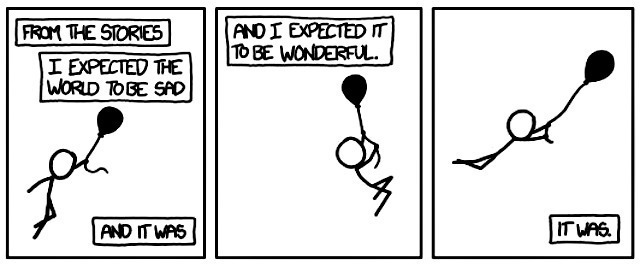Interactive Narratives Spring 2016
Course Objective
In this class, students will study how to combine multiple media forms into cohesive narratives. They must take into account the nature of each form — the cognitive load, the learning curve, the various senses it stimulates — and learn how to combine these into various narrative forms (linear and non-linear) to deliver maximum impact. This is not a production course so there won't be any reporting assignments. This is by design to allow time to do work in other production-based New Media classes that are held the same time.
Final Assignment
Students will conduct at least one or more interviews with the reporters/developers/designers of the interactive package they pitched. Then they will turn in a one-page report. This report should give us a detailed summary about the project and answer several relevant questions such as: What is the story about? How was it designed? What are the different pieces of multimedia that compose it? What was the goal of the piece? In which ways does the design influence the story (or vice versa)? What was the workflow process of building this project? What were the challenges in reporting and building it? How was the idea initially conceived? How long did it take to report and build? When was design and development brought in? How did the final presentation of the project influence the reporting? What were the implications of the story both among the public and within the newsroom?
Students will then present their work in the last three classes. Each presentation will be 10 minutes with 5 minutes of Q&A
- Jan 22
- Introduction (Medium is the message) — This session will cover the core concepts underlying most of the class, understanding different media forms and how they communicate.
- Jan 29
- Taxonomy triangle (continuous, comprehensive, immersive) — This session will explore the taxonomy of online news packages, and the various types of formats available for presenting both singular linear narratives, and comprehensive non-linear packages.
- Feb 5
- Evolution of the digital news package — This session will cover the uncertain path of how the digital news package evolved over the years to become what it is today.
- Feb 12
- Continuous News Stories (Case Studies) — In this class we will look at some 'continuous' news stories and discuss the nature of the form, the types of stories best told in this format, and effectiveness of the presentation.
- Feb 19
- Comprehensive News Stories (Case Studies) — In this class we will look at some 'comprehensive' news stories and discuss the nature of the form, the types of stories best told in this format, and effectiveness of the presentation.
- Feb 26
- No Class This week — Due to unforeseen circumstances, we had to cancel this week's class
- Mar 4
- Digital Archiving — This class will include a guest speaker on digital archiving and the semantics of the web.
- Mar 11
- Immersive News Stories (Case Studies) — In this class we will look at some 'immersive' news stories and discuss the nature of the form, the types of stories best told in this format, and effectiveness of the presentation.
- Mar 18
- Virtual Reality — In this class we will explore various Virtual Reality and 360-video stories, particularly ones where the viewer requires the use of a pair of goggles.
- Mar 25
- Spring Break — No class
- Apr 1
- Animation in News — In this class we will explore examples of animation in news. This can be anything from illustrations, cartoons, motion graphics, or narrative graphics.
- Apr 8
- Design Thinking and Agile Workflows — In this class we will discuss workflows for developing online news and the techniques that borrow heavily from Silicon Valley and the technology industry.
- Apr 15
- News Games and Experimental Forms of Non-journalism — In this class, we will discuss experimental forms of journalism, especially those done by non-journalists. How can these experiments inform narrative online storytelling done by journalists?
- Apr 22
- Class Presentations Part 1 — Students will present their final reports. Groups will be listed in this lesson.
- Apr 29
- Class Presentations Part 2 — Students will present their final reports. Groups will be listed in this lesson.
- May 6
- Class Presentations Part 3 — Students will present their final reports. Groups will be listed in this lesson.
